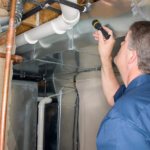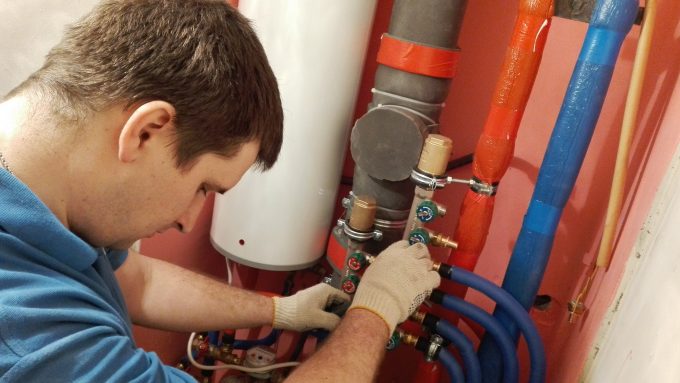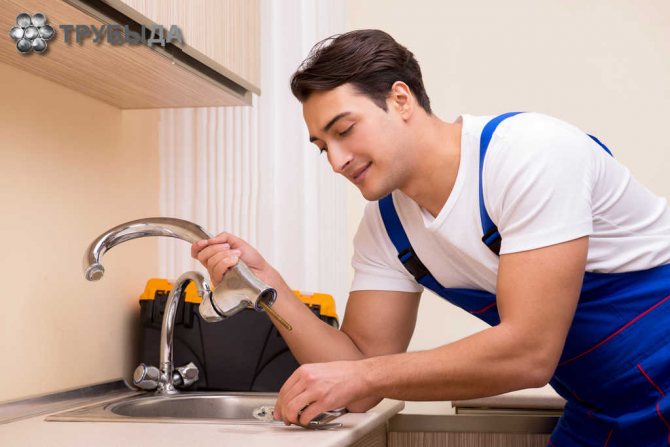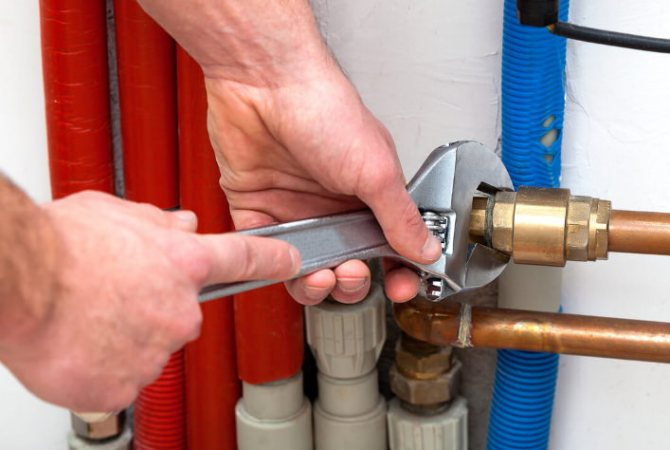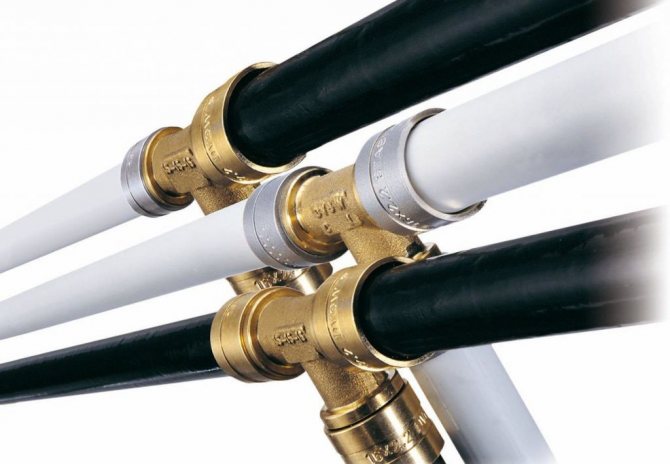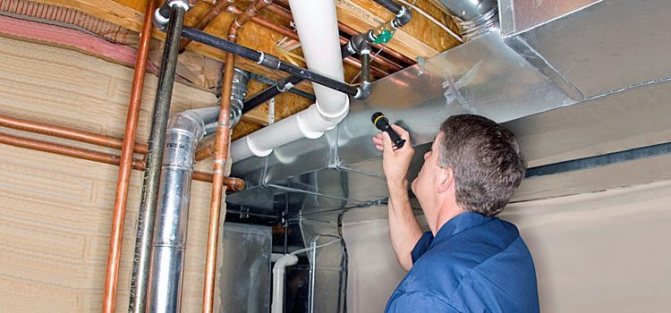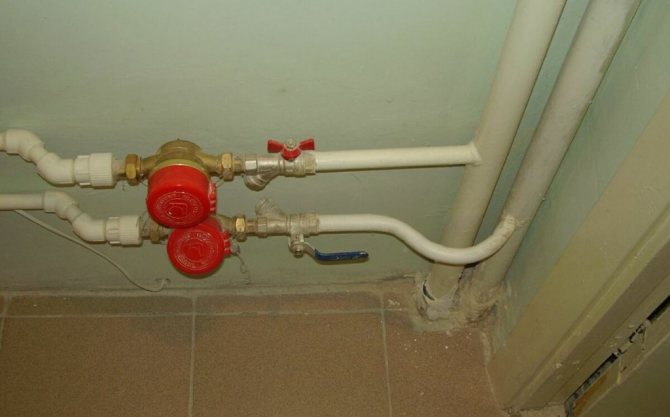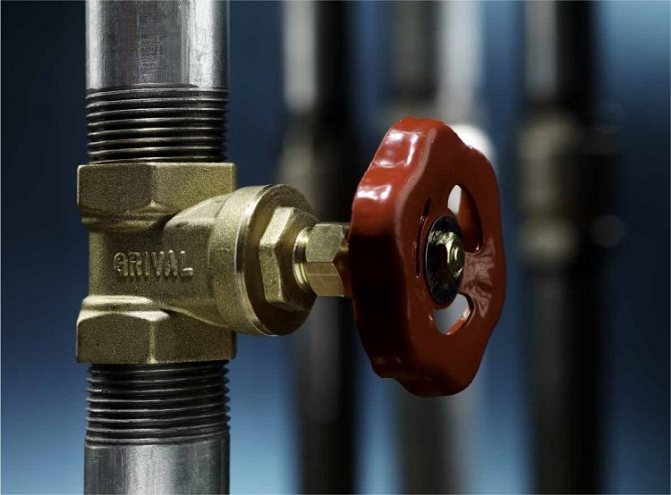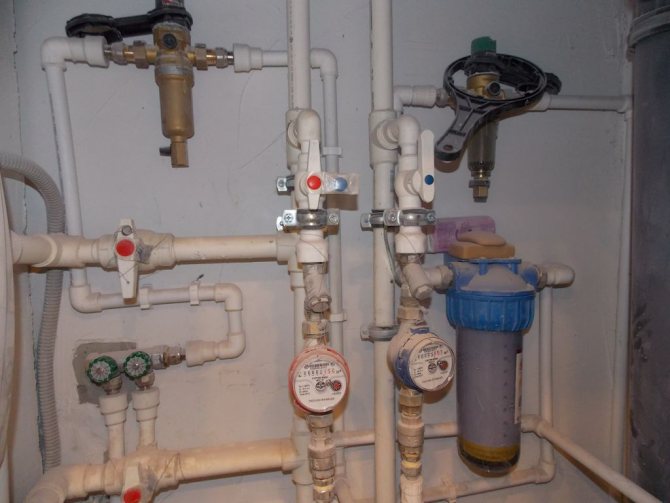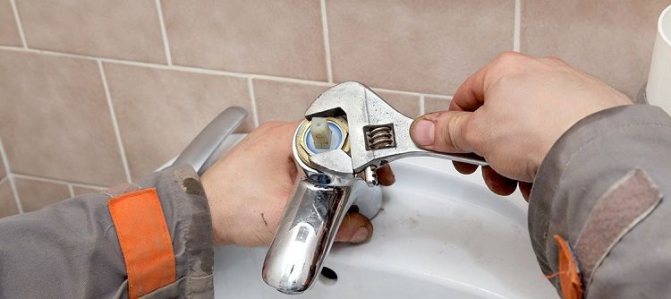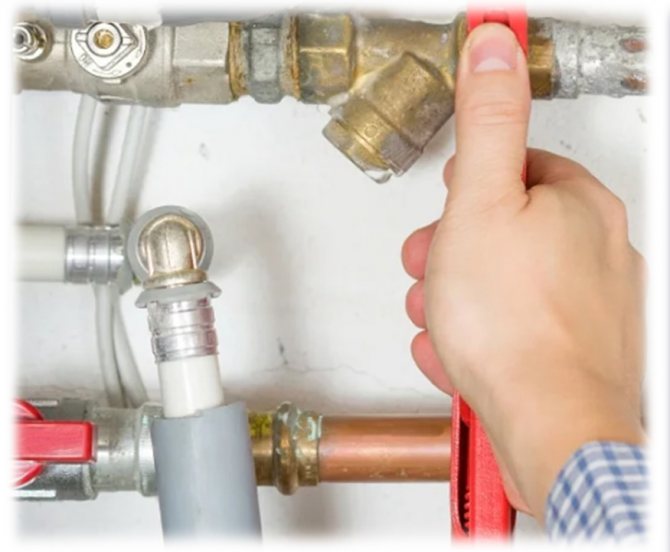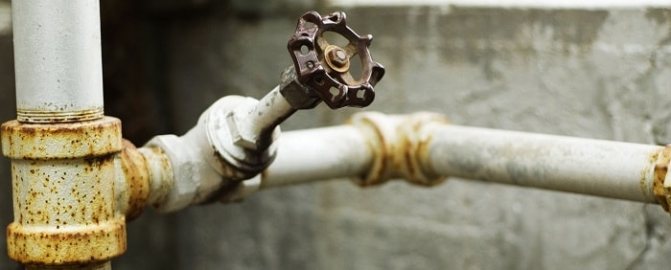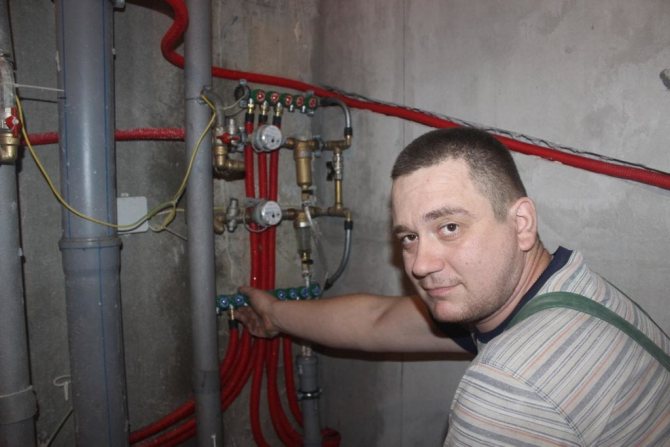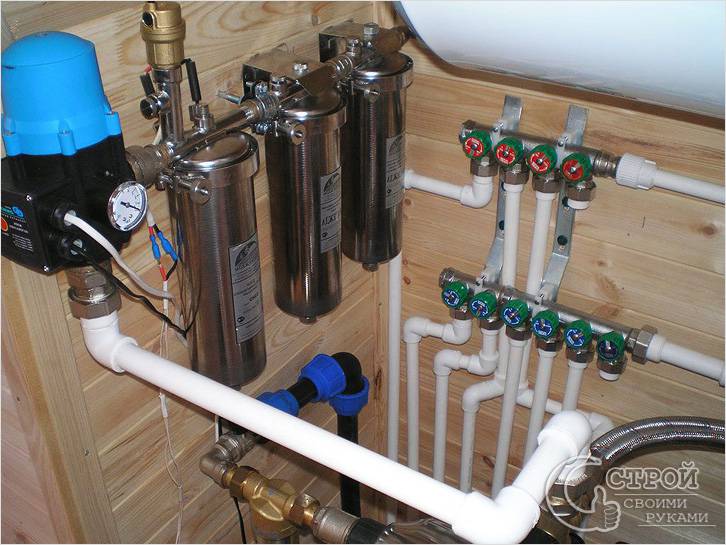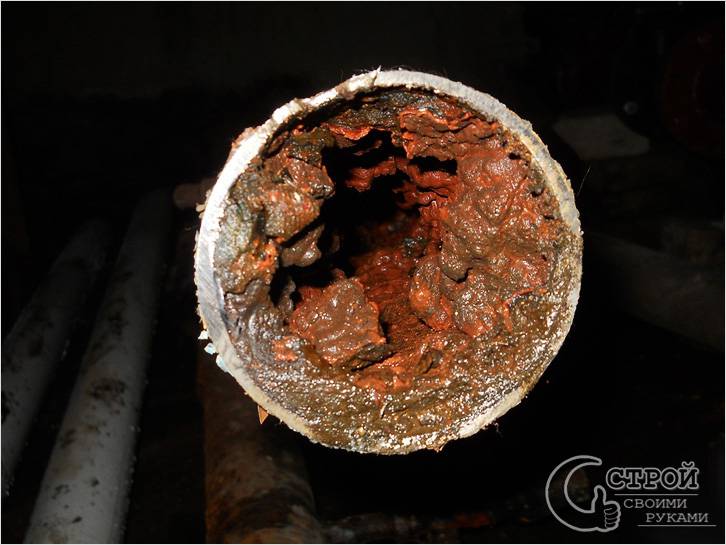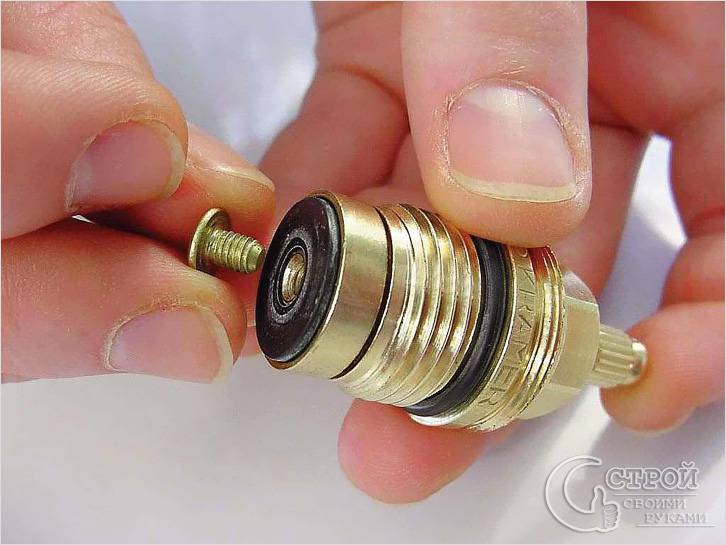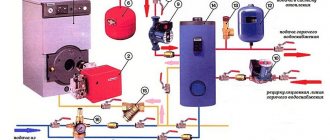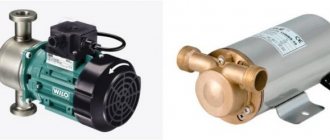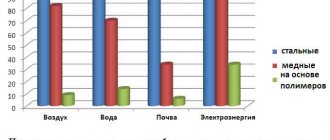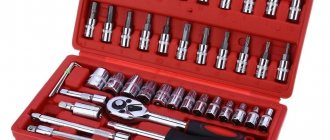Why are water pipes buzzing?
There are several reasons, we will consider them in order. Before that, it would be nice to remember under what circumstances you first encountered such a nuisance. In an apartment building, the culprit may not be you, but the residents who live on the floor above (those who live below you are most likely not involved). Then they will have to retell what you read about in this article.
So why are the plumbing pipes buzzing in the apartment? According to SP 31.13330-2012 (operates on the territory of Russia, but the process of water movement in centralized water supply pipelines does not have citizenship), the nominal indicators of the water supplied to the dwelling must comply with the following standards:
- The pressure in the network is no more than 1 MPa (but this is in the main line, and you should have no more than 0.5 MPa!);
- Movement speed, m / s, no more - 1.5 ... 2.0;
- Head, m, not less - 10 m.
The data refer to multi-storey buildings, therefore the last indicator includes information established relative to the point of the water supply that is located above the booster pump. For private houses, the figures should be the same, since the tie-in into the central (district) water pipe must be made by licensed enterprises, which are well aware of the provisions of SP 31.13330-2012.

You can focus on the data given and private developers who plan to organize water supply from an autonomous source, for example, a well.
The above standards predetermine the choice of all design and technological parameters of internal water supply networks:
- For what kind of water supply they are laid - hot or cold water.
- The fittings with what characteristics will be installed at the water distribution points. First of all, this applies to flush cisterns, risers, toilets, faucets in the bathroom or kitchen, etc.
- How the pipes are placed in the house / apartment.
- What are the total values of hydraulic resistance caused by turns, descents, climbs, valves, etc.
- What materials the pipeline diagram is assembled from.
If all of the above points fully meet the standard conditions of centralized water supply, then all physical laws are observed, and your pipes will not be able to hum. But, unfortunately, sometimes we ourselves allow some liberties, for which we pay with unpleasant sounds. Why is the water making noise in the pipes?
The pipes in the riser are buzzing: what to do
If the water pipes hum when the cold or hot water tap is turned on, then there is definitely too much pressure in the network. A side effect, in addition to the cast voice, can be a depressurization or a breakthrough. To compensate for the cause of hum noise in pipes, additional equipment should be installed:
- hydroaccumulator;
- a plastic or rubber elastic tube that plays the role of a shock-absorbing device;
- air silencer.
If the supplied resource contains a large number of air inclusions, then the above devices will be useless without affecting the noise level. In the latter case, it is necessary to file a claim with the supplier, demanding an answer to the question "why are risers making noise during the day and at night?"
Sound occurs when the mixer is running
When the voice of the water supply system sounds when the taps are turned on, special attention should be paid to the plumbing, namely to the mixers.Why is there a trumpet voice because of the mixer operation? Under the "herringbone" there are rubber seals, which may have broken integrity. To solve the problem, you need to install a new mixer model.
Dirty waterways
Also, the reason why the risers are buzzing is the overgrowing of pipes. This condition worsens over time, regardless of the material from which the components of the water supply system are made. Most often, at the ends of the pipeline sections, lime deposits, scale in large quantities are observed, causing a voice due to the development of vibration. You can clean the slagged areas, and if the procedure turns out to be useless, then there is only one way out - replacing the apartment piping.
Incompetent workers
A voice howling day and night, the location of which is difficult to determine, may be the result of the hackwork of a team of plumbers serving the basements of a multi-storey building. If you suspect a poor-quality installation of connections, you can contact the management company with a request to eliminate the voice.
Law of physics
When the hot riser starts to work, you can also hear the voice of the water pipe. This phenomenon has a purely physical reason - the supply of hot liquid through a cooled water conduit leads to its expansion and contact with nearby water conduits or fixtures. For successful elimination of the voice, the place of contact should be determined, then it should be isolated with suitable materials.
Types of hum in water pipes
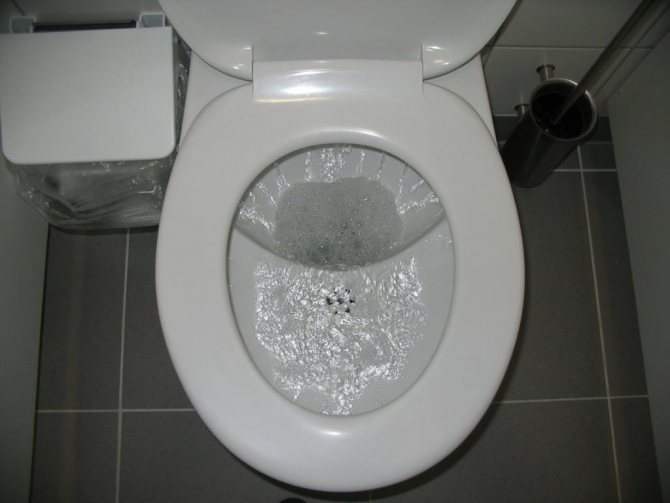

The household classification of such sounds is as follows:
- Constant uniform noise;
- Noise that occurs when a valve or tap is closed;
- Humming with a gradually increasing whistle;
- Vibration of pipes during flushing.
Periodically, you can hear other sounds, for example, gurgling, but this is typical not for pipes, but for ventilation systems, where external moisture can get (during a rainstorm).
Constant hum in the pipes
Why do pipes sometimes hum? There is nothing wrong with such sounds. Water is an ordinary liquid medium that moves through a pipe from a point of high pressure to a point of less pressure. In the process of such movement, friction of some layers of the water flow against others, adjacent, occurs.
This phenomenon is called fluid friction, and is due to the fact that the conditions for the movement of water in the pipeline are not the same: those volumes that are adjacent to the inner walls of the pipe move more slowly, since there the roughness of the walls begins to affect the intensity of movement, as well as possible mineral and lime deposits of insoluble in salt water (especially if the system has not been cleaned for a long time).
You will not hear any hum in a dry pipe. Accordingly, such noise will not affect the durability / resistance of the pipeline.
Hum in the water supply system when the tap is closed
Rare. This phenomenon is associated with nearby pipes (from neighbors, or you, in an adjacent room). If the intensity of the hum is low, you can ignore it at all.
For older homes, humming pipes can be caused by water or heat transfer fluid leaks. They most often occur in basements, and are associated with extremely worn valves.
Buzz with a transition to a whistle
Why can pipes buzz with a transition to a sibilant sound? The phenomenon is observed when the water pressure is made above 0.6 MPa. To do this, you will have to use a pressure gauge.
The magnitude of pressure, even within the same apartment, may not be the same, so measurements should be taken at all points of distribution.
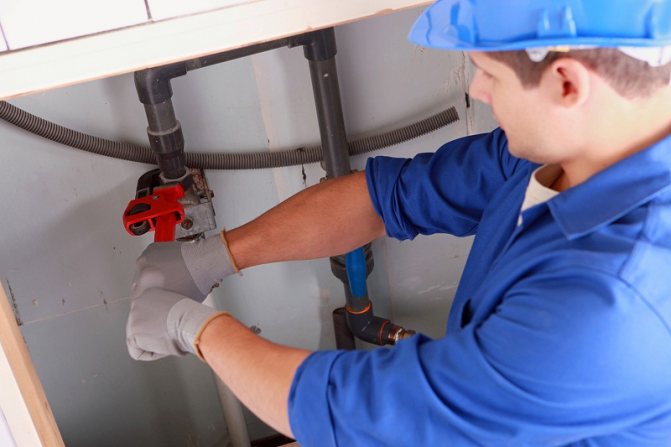

The second reason is a poor quality / worn out gasket. Rubber, which is most often used for these purposes, wears out over time, and more intensively - for water pipes without inlet cleaning filters (which is typical for apartment buildings).The edges of the gasket become sharp, which abruptly changes the direction of flow. Voids are formed between the water molecules and the air in the pipe, which, when moved, cause a whistle.
If the pipes in the toilet whistle when you flush the toilet, the problem may be in one of the valves. If there is a humming sound, it is necessary to clean each valve from dirt - the sounds will surely stop. Sometimes, if the phenomenon is not eliminated, it is necessary to replace the valve on the drain tank.
The toilet lid (rubber plug at the bottom of the tank) can also be the culprit for the whistling buzz. To check, add a few drops of food coloring to the tank and see if the color decreases quickly. If so, your tank is leaking and it's time to replace the flap.
Noise in pipes with vibrations


Water hammer arrester
This is the most formidable phenomenon, as a result of which the pipe may even collapse. These are the consequences of the same water hammer, which has already been mentioned. What is a water hammer?
The phenomenon occurs when the toilet bowl or mixing valves close too quickly. Since the water suddenly stops, it sounds like a hammer hitting pipes to your ears.
If you find that the blows have become more frequent and stronger over time, then the reason is that the air chambers in your pipes, which help mitigate the water hammer effect, are filled with water and need to be drained. This can be done by shutting off the main water supply, opening all taps, and flushing all toilets.
The modern way to solve the problem is to install a water hammer arrester, but such work should be entrusted only to a highly qualified plumber, since you will have to disassemble and re-solder / digest part of the pipeline.
Open pipes can hum and vibrate if their mountings are loose, especially on long lines. With a slight shift of the axes, the integrity of the flow is violated, and friction increases. All conditions for water hammer are met.
Hum due to squeezing cold water into hot water or vice versa
What kind of valves do you have - valve or ball valves? This is very important, because often the cause of humming in the pipes of hot and cold water supply is caused by a SHARP opening / closing of the water flow. In newfangled ball valves, this happens all the time, while in the case of valve valves, you still have to try to organize such sounds.
The principle of operation of the ball valve is based on the following. There is a ball inside the device that moves up and down inside the valve. The seat is machined to fit this ball and the inner cavity is tapered to direct the ball into the seat to stop water flow.
If the pressure in the water supply system (or the power of the booster pump) is insufficient, then if the diameter of the ball is incorrectly selected, a water hammer occurs in the system, accompanied by a sharp noise.
With all the advantages (quick on / off flow, simplified maintenance, insensitivity to the gasket material), ball valves are much more likely to provoke a loud buzz in the water supply than valve ones. The reason is that when the valve is turned, the user shuts off the water GRADUALLY. Yes, this will happen more slowly, but it will not be accompanied by unpleasant sounds. Therefore, if you have already settled on the version with a ball valve, then you should choose a structure not with a steel, but with a polyurethane ball. Then such a phenomenon will not arise.
Poor repairs and blockages as causes of hum
With poor-quality repairs, the buzz can generally appear from anything. Do not trust the work to random performers and control the operation of pipelines in all modes, including extreme ones, during acceptance - and nothing like this will happen.
The blockage is almost never the cause of the hum, but then dull shocks and bumps will be felt, sometimes accompanied by vibration of the pipes.
Knocking pipes - reasons
The main likely cause of knocking is improper installation of high-rise piping components, which causes the plumbing to voice. The following are the most common problems with incorrect installation:
- installation of a screw valve valve against the movement of water - an error is fraught with a detachment of the valve, which, blocking the flow of water, will knock on the walls of the water supply system;
- physical factor - when the hot tap is opened, the water flow enters the cooled pipeline, heating it and causing slight vibration.
Important! For houses of an old building, the presence of excess pressure of pipes is characteristic due to their overgrowth with slag. Operation in this case is dangerous - there is a serious risk of gusts.
To eliminate knocking, a special air chamber-muffler is placed in the gap between the tap-pipeline, which takes on the vibration effect and thereby dampens extraneous sounds.
How to find the cause of the hum
If there is a hum in the pipes, the following methods are available:
- A sharp change in pressure (open / close the tap several times in a row). If after this execution over the pipes they react adequately (do not shake, do not shake, do not leak), then the noise, most likely, turned out to be accidental. Otherwise, it is better to record the situation on a mobile phone camera, and then demonstrate the video to the plumber:
- Monitoring the condition of the inner surface of the pipe that emitted noise. An endoscope is suitable for this, or just a long steel rod made of elastic steel, with which you can examine a section of a pipe up to 1 m long. The most suitable moment is to remove the meter for verification in an organization that provides centralized water supply services. Then the channel is open, and access to it is free;
- Measurement of the current pressure value - both on the riser and at problem points of the internal pipeline line. You will need a pressure gauge, but read on how to use it.
Reason # 3 - there was a "heart attack" of the pipe
Reducing the diameter of the pipes due to blockages leads to the fact that the resulting reactive fluid flow creates small vibrations and corresponding noise. And noise, as you know, is transmitted very well through pipes. How to diagnose clogged water pipes? To do this, you need to disconnect the mixer from the pipe and determine its condition. The dirt accumulated on the walls is the main indicator of pipe overgrowth.
Most often, the dirt contained in tap water is deposited precisely at the ends of the pipeline and you can try to clean them. The problem of clogging of the end sections of the water supply system is characteristic not only of metal pipes, it is also inherent in plastic and polypropylene pipes. The diameter of the mixer hoses differs from the diameter of the pipe itself and this contributes to the accumulation of dirt in these areas.
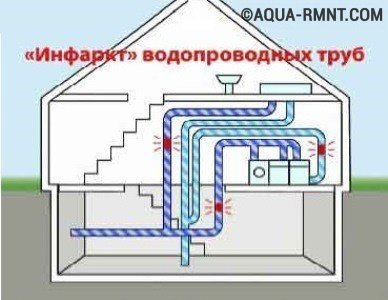

In the absence of repair of engineering communications, dirt (rust, salt) settles on the inner walls of the pipes, reducing their diameter
The blockage can be removed by hydraulic or pneumatic flushing and mechanical cleaning. Flushing is the flow of a strong continuous flow of water through the water supply system. For this, electric or circulation pumps are used. In this way, only light particle blockages in pipes with a high water flow rate can be flushed out. But this method is ineffective for pipes with a large diameter, in which water flows slowly, since heavy particles will still settle on the walls.
Cleaning is done in separate sections of the pipe. The water is turned off and drained from the problem area.The pipe is disconnected, cleaned with a thick wire (for the best effect, you can attach a ruff to it). If the pipe is not cleaned by any of the above methods, the blockage piece is cut out and replaced with a new one. And in order to eliminate additional noise due to unreliable fastening, the pipes must be attached tightly to the building structures using rubber gaskets.
How to eliminate hum
High pressure
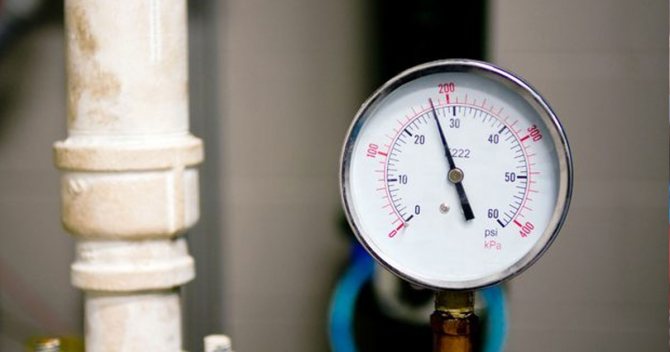

The most efficient way to eliminate hum is by reducing the pressure in the network. Installing a downstream pressure relief valve will solve all problems.
It can be adjusted to the pressure value that is optimal for your specific conditions. It is important not to overdo it, otherwise the pressure in the pipes, reduced to, for example, 0.3 ... 0.35 MPa, will negatively affect the performance of all water distribution devices.
The selection of the size and the subsequent adjustment of the pressure reducing valve is performed according to the following parameters:
- The initial pressure in the line (set only after repeated checking of this indicator using a verified manometer, and the check is carried out at different times of the day - day and night, and the result is taken at the actual maximum).
- Water pressure at the outlet of the device (it should not be less than 0.4 MPa).
- Water temperature (taken into account if the valve is intended for heating systems).
- Water consumption (you can find out from the organization that supplies this service, or you can use experimental data, since a bucket and a stopwatch are always at hand; such measurements should also be taken several times, and at different times of the day).
To select the size of the pressure reducing valve, it is enough to know Dу - the inner connecting diameter (coordinated with the corresponding value of the pipeline), the nominal pressure (according to GOST 26349-84), the coefficient of the valve's flow capacity and the operating range of the variation limits.
Poorly anchored pipes
If the fasteners are loose, the axis of the pipeline is distorted, as a result, the flow may deteriorate, and a gurgling is felt in the line. If tightening the brackets and improving their fixation on the wall / partition did not bring any effect, you will have to start cleaning the pipelines. Typically, such work is performed by housing and communal enterprises that have the appropriate equipment at their disposal.
Owners of private houses will have to stock up on a homemade brush - a coil of high-carbon wire, at one end of which a hook is made in the size of the inner diameter of the pipe. By turning the device several times around its axis, it is possible to establish the place of the "bad" joint: there the brush will cling to the end of the adjacent pipe.
Reducing the inner diameter of pipes
Bad option. With a decrease in the inner diameter, the risk of hum and vibrations will only increase, because the flow rate will remain the same, and the flow area will become smaller.
On the contrary, increasing the diameter of the pipes will help to cope with water hammer, although the possibilities of this method are very limited. It is better to install one or more air chambers. They are of two types. The first is just a vertical pipe, closed at the top and filled with air. It connects to the water supply using a T-fitting located next to the faucet and is often located inside the wall.
Another set includes a spirally wound coil of copper tube that is sealed at the top and also filled with air. It is also connected to the water supply using a T-shaped fitting.
Close arrangement of pipes


Increasing the distance between the axes of adjacent pipelines is an acceptable, but not very effective, preventive option, because at one time you already took everything into account when laying pipes.
If not, you will have to recalculate all the actual values of the head loss.
It is better to entrust this work to specialists.
Thermal expansion of material
The factor matters if the water supply system was assembled on PVC pipes and was originally designed only to supply cold water.
Over time, the requirements have changed, and a high temperature coolant was required. PVC pipes can withstand temperatures up to 80 ... 850C, within these limits the thermal expansion of the material is insignificant and does not affect the noise in the pipelines.
Otherwise, the pipes will have to be completely replaced with steel pipes, moreover, made of stainless steels of 08Х18Н10 type, the stable value of the coefficient of thermal expansion of which is guaranteed up to 160 ... 1800С.
Replacing the mixer


If you have chosen a mixer for the specific conditions of water supply to the home, then nothing needs to be changed.
Situations where pipes with valve and ball valves are buzzing have already been mentioned, analyze this before going to a plumbing supermarket and compare your own conclusions with the advice of sellers.
Repair of gaskets
When replacing gaskets, note the following:
- The type of rubber for gaskets should be taken in accordance with the standards of GOST 7338-80. The most durable gaskets are made of soft sheet rubber of TMKSH grades of classes 1 or 2. The material is efficient at temperatures up to 800C and pressures up to 10 MPa.
- When purchasing ready-made gaskets in a store, do not hesitate to find out from the seller the material of the product: in small outlets, gaskets made of non-molded rubber may come across.
- Rubber-fabric plates as blanks for the manufacture of gaskets are not suitable: the coefficients of thermal expansion there are different, and the hydrophobicity (swelling) of the gasket during prolonged stay in a humid environment is increased.
At the same time, it is worth replacing the inlet valves for pipelines with spherical versions: they quickly close the water flow in case of an emergency. Beware of Chinese-made products: the actuators - the one-armed lever and the ball in such products are often made of steel of unknown quality.
Treatment
The specificity of eliminating such a symptom is that you need to get rid not of tinnitus, but of the factor that caused it. From this it follows that the treatment will be individual in nature:
- if there is a sulfur plug, washing the ears will be enough;
- in cases or influences, you will need to take fortifying substances and antidepressants;
- if the source is the pathology of the cerebral vessels or hypertension, then it is necessary to comprehensively eliminate cardiovascular ailments, take medications to lower blood pressure and improve cerebral circulation;
- inflammatory pathologies of the hearing aid include the use of antibacterial agents or the use of local therapy. With a severe course of such ailments, surgical intervention is necessary;
- with otosclerosis, an operation aimed at prosthetics of the auditory bone is indicated;
- in cases of damage to the auditory nerve, the only treatment is the use of a hearing aid.
Good results can be achieved with the following physiotherapy procedures:
- electrophoresis;
- magnetotherapy;
- laser therapy.
Sometimes you can use the methods of alternative medicine. For the preparation of medicinal broths and infusions, use:
- currant and strawberry leaves;
- elderberry flowers;
- lilac and clover;
- mountain ash and lemon balm;
- Dill seeds;
- horseradish root.
To obtain drops that need to be instilled into the ears, use.
Residents of apartment buildings often encounter such an unpleasant phenomenon as the hum of water pipes. Moreover, residents of apartments throughout the riser, and sometimes the whole house, feel this acoustic noise.Where does it come from, for what reasons does it appear, and are there methods of dealing with it? In theory, there are many explanations for why pipes in an apartment are buzzing. In practice, however, four main reasons have been identified that cause its occurrence. And they can be eliminated. We will talk about this below.
The most common causes of annoying pipe rattling are:
- Poor quality repair.
The hum in pipes may be due to a loose connection or unprofessional installation. - Excessive pressure in the water supply network.
This reason is likely when there is too much water pressure in the tap and when it is shut off, the noise increases. Such a problem is associated, as a rule, with complex repair work on the water supply line and the management organization should be engaged in its elimination. - Reducing the inner diameter of the water supply
(the so-called "infarction" of the tubes). This happens in houses where major repairs of engineering systems have not been carried out for a long time. Pipes are overgrown over time from the inside with salts and rust, which reduces their diameter. The water pressure remains at the same level, which is the reason for the rattling of the pipes. In this case, it is recommended to replace the metal pipes with plastic ones. - Plumbing malfunctions.
The hum of the water pipe can be caused by damaged taps, mixers (incorrect gaskets, broken axle box faucet). Moreover, unpleasant sounds are emitted in all apartments, and not only in the one where there are problems. And in order to identify the problem, you need to turn off the input taps in each apartment one by one.
And now we suggest you dwell on each point in more detail.
